
Jaguar is a luxury automaker that’s part of the Jaguar Land Rover group. This British group is headquartered in Coventry, England and owned by Tata Motors, an Indian company. Prior to the merger with Land Rover in 2013, Jaguar Cars produced all their vehicles.
The heritage of the Jaguar story lives on through the future generations of vehicles. As the years go on, they continue to innovate and look toward future technologies.
Currently, the company manufactures an extensive line of vehicles. This includes the E-Pace, F-Pace, and I-Pace SUVs. They are also known for the F-Type sports coupe and convertible. As far as sedans go, they have the XE, XF, and XJ models.
Jaguar Car History
The Beginning
In 1922, the Swallow Sidecar Company was formed. William Walmsley and William Lyons were two motorcycle enthusiasts that joined forces. A few years down the road, in 1934, Walmsley sold his part of the company. Lyons wanted to purchase that portion so he formed S.S. Cars Limited.
The first Jaguar model made its appearance in 1935. It was an SS 2 ½-liter sports saloon, but there was also a matching open two-passenger sports car. That version featured a 3 ½-liter engine and received the name SS Jaguar 100.
During a meeting of the shareholders in 1945, the company’s name was changed to Jaguar Cars Limited. For the next five years, the demand for production grew, but there was a shortage of steel. In the 1950s, they became dependent on external supplies to create their car bodies.
Jaguar became a more popular name when it started producing sports cars. Several popular models of the time include the XK120 (From 1948 through 1954), the XK140 (from 1954 through 1957), the XK150 (from 1957 through 1961), and the E-Type (from 1961 through 1975).
Engine Manufacturing
Lyons’ success after the Second World War had a lot to do with the twin-cam straight-six engines. It featured a hemispherical cross-flow cylinder head and valves that inclined in a vertical position. Fuel octane ratings remained low after 1948, so three piston configurations were offered. They were domed for high octane, flat for medium octane, and dished for low octane.
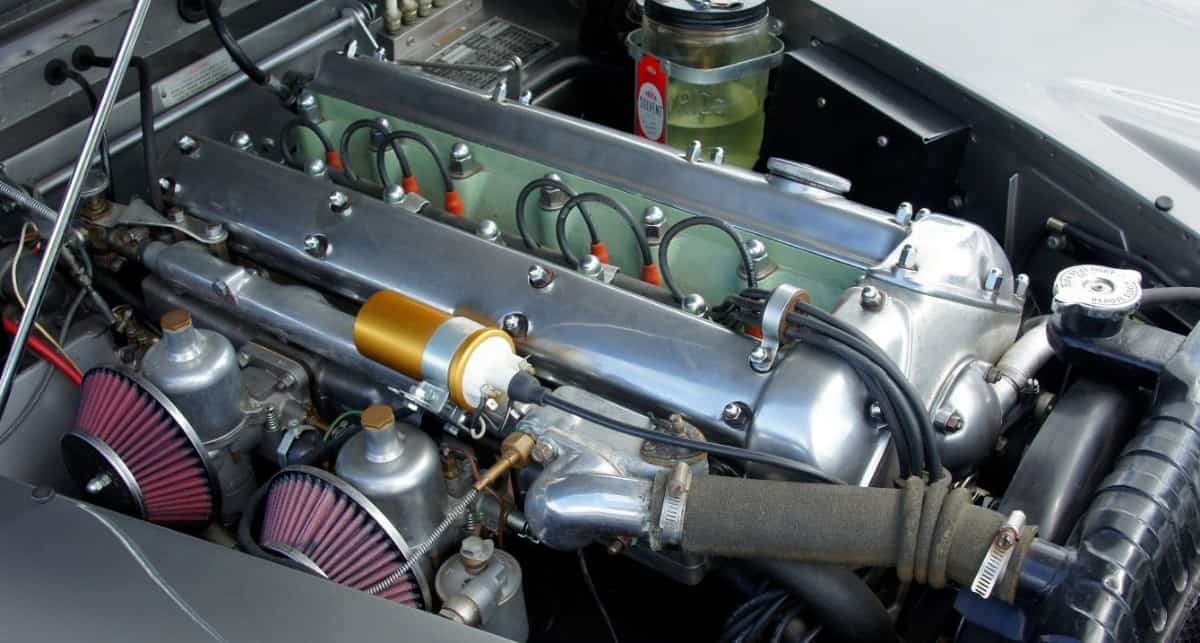
Their next engine became the main component for Jaguar. It was used in the Mk VII Saloon, XK 120, Mk I and II Saloons, as well as the XK140 plus the 150. They even put it in the E-Type. Eventually, it became known as the Twin OHC XK Engine and it was the picture of longevity. They used the motor from 1969 until 1992, and it even made its way into some British Army vehicles. This engine often achieved a lifespan of over 200,000 miles when properly maintained.
Lyons’ dream was always to create a company that produced famous sporting saloons, not sports cars. That’s why the company focused heavily on elegant luxury saloons which led them to financial stability. All of their vehicles earned a reputation for being comfortable, high-performing, decent values with great style and handling.
During the era of the XK 120, 140, and 150 line of sports cars, there was little rivalry for Jaguar. Their achievements were remarkable and they owned the market.
Shifting Companies
For a while, Pressed Steel Company Limited was responsible for all the bodywork. That left Jaguar to handle all their installation and mechanics. During 1965, the British Motor Corporation (BMC) and Austin-Morris purchased Pressed Steel. This was when Lyons started to worry about the future of his company; not just because of the body supply issue but because of his age as well.
That’s when he allowed BMC to merge with the Jaguar Company. Together, they became British Motor Limited. By 1966, they changed their name to British Motor Holdings.
Then, the government pushed BMH to merge together with the Leyland Motor Corporation Limited. At the time, they produced the Leyland bus, Leyland truck, Standard-Triumph plus Rover vehicles. What resulted was the British Leyland Motor Corporation, founded in 1968. This merger didn’t go as planned and there were many poor choices plus financial difficulties that created division.
If Jaguar remained a part of the group, their reputation would be tarnished. The capital was insufficient and it became more difficult to produce new models. In 1984, the company went out on their own once again.

Sir John Egan became the company’s chairman and he brought back prosperity. He focused on quality control, reduced productivity, and lax delivery schedules. During this time, he cut about a third of the workforce, which equaled out to about 10,000 employees. This was done to cut costs.
When Did Ford Buy Jaguar?
In 1989, Ford offered to buy the US and UK shares of the company. They removed the listing from the London Stock Exchange in 1990 but didn’t become an official member of Ford’s Premier Automotive Group until 1999. Other automakers in this lineup included Volvo Cars, Aston Martin, and eventually, Land Rover.
While Jaguar was part of the Ford Company, they never made a profit. They did, however, expand their range of products and included the new X-Type and S-Type. During this time, Land Rover and Jaguar started to become widely associated with one another. They had a joint distribution and sales network and even shared a few dealerships. Some of their models had shared components as well.
In 2007, Ford shared its plan to sell Land Rover and Jaguar. Several companies expressed an interest in acquiring these premier marques. Along the way, a few of the companies backed out, leaving behind less competition.
Tata Motors
In 2008, Ford sold the company to Tata Motors, an Indian manufacturer. The deal cost $3 billion and was financed by JP Morgan plus Citigroup. Included with this deal, Tata also received the rights to Daimler, Rover, and Lanchester.
Tata Motors, the new Jaguar parent company, created the Jaguar Land Rover Limited brand as a wholly owned subsidiary. This put Land Rover in charge of the design, production, and marketing of all Land Rover and Jaguar vehicles in the UK.
Alternative Propulsion Methods
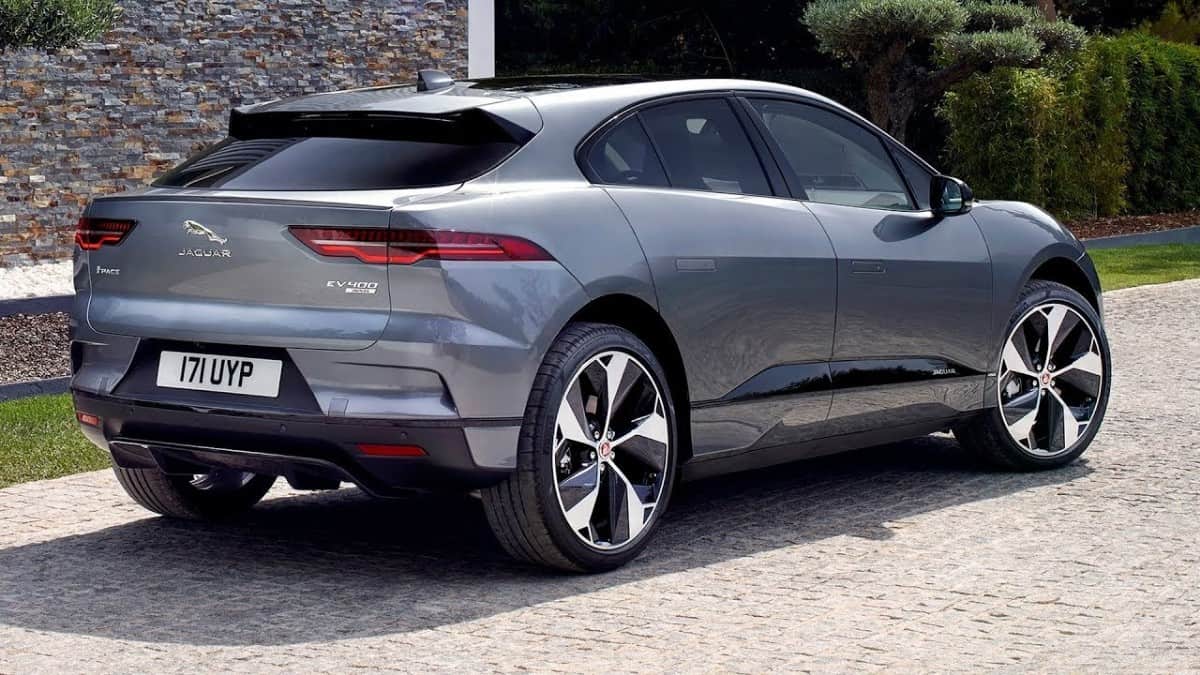
Starting in 2019, Jaguar offered their first electric vehicle, the I-Pace. A full charge provided a 240-mile range. In addition, the all-wheel-drive traction allowed the I-Pace to accelerate as a sports car would. In fact, it hit 60 mph in just 4.5 seconds.
The 90 kWh battery is constructed of high-energy density, lithium-ion pouch cells. This provides additional longevity and sustained power.
Propulsion occurs because of the two magnet synchronous electric motors. They produce 394 horsepower. Inside the cabin, there are five seats and plenty of storage.
The I-Pace receives an 80% charge in just 85 minutes. The 50 kW DC rapid charger needed to make this happen is available at most charging stations.
The company even offered incentives to buyers of their first electric vehicle. These included lower road taxes, reduced tolls, government grants and more access to HOV lanes.
Jaguar Safety and Crash Ratings
In 2017, the Euro NCAP tested both the F-Pace and the E-Pace. Both vehicles received the highest five-star honors. Both were tested with standard equipment; nothing optional was added.
As far as the IIHS, it appears that they haven’t run safety tests on the vehicles nor do they have any recent ratings for them.
Safety Equipment
Jaguar vehicles come with numerous options as far as safety equipment goes. They even have a powered gesture tailgate which enables drivers to operate their tailgate from the curb. They don’t also need to touch the vehicle or use their key fob. Instead, users place their foot under the car’s rear corner and the tailgate opens.
Emergency Braking is another safety feature offered. If a collision is about to occur, the vehicle gives a warning and applies the brake to reduce the impact. With the Lane Keep Assist and Driver Condition Monitor, the vehicle remains in the lane when the car applies corrective torque. Then, an alert is given to take a break and wake up.
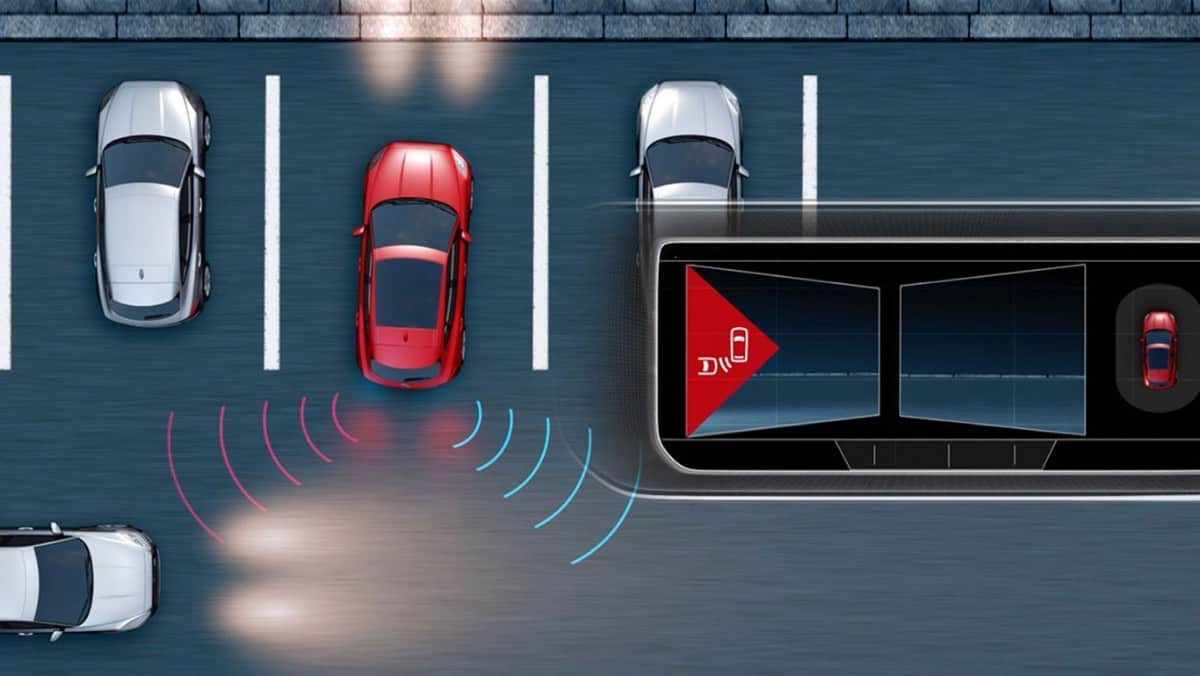
The rear camera improves visibility by displaying what’s behind the vehicle. Other safety features include Park Assist, Rear Traffic Monitor, and Blind Spot Assist.
Jaguar Safety Recalls
According to Wards Auto, Jaguar Land Rover is listed right in the middle of all the manufacturers as having an average recall rate. With that said, the chances that a recalled car from this brand would result in death, injury, crash, accident, or fire is on the higher side. They ranked #6 on that list. The good news is that in 76% of circumstances, these recalls were of Jaguar origin rather than being direct orders from the NHTSA. In fact, they are third on the list right behind Tesla and Porsche.
Jaguar Land Rover wasn’t listed on the Forbes study into recalls.
In 2014, they recalled 7,079 Jaguar F-Type Convertibles (2014-2015) because of an incorrect wiring concern that caused the front airbag not to activate. Then, in 2015, another 104,000 vehicles were recalled because the brake hose could rupture, leading to the loss of brake fluid. This recall affected both Jaguar and Land Rover with 74,000 SUVs and another 5,000 luxury sedans involved.
Consumer Satisfaction Reports & Dependability Ratings
Consumer Reports gave Jaguar good ratings when it came to customer satisfaction. On the other hand, they scored pretty low on the chart for reliability. That forced them to rank the overall brand at 29th place out of 34 vehicles tested.
In the 2017 J.D. Power Vehicle Dependability Study, Jaguar scored 4/5 in Feature and Accessory Dependability. They also receive 3/5 on Body and Interior Dependability, Powertrain Dependability, and Overall Dependability.
According to Consumer Reports, the cost of maintenance is slightly higher than most other automakers. After three years, maintenance costs average out to $285 each occasion. Then, after 10 years, that number skyrockets to $905 per incident. This places them fourth out of the most expensive. It was beat by BMW, Mercedes-Benz, and Audi. That proves that foreign luxury cars tend to cost more to maintain.
Jaguar Awards
While all of the Jaguar vehicles win awards, the F-Pace has been the real show-stopper. The 2017 Jaguar F-Pace won more than 70 awards alone. This included the World Car Design of the Year 2017 and the World Car of the Year 2017.
Their other line of vehicles has their share of awards as well. For example, the 2017 XJ was recognized as one of the Best Luxury Cars during the Total Quality Impact Survey.
The Arts
Jaguar is known for remaining active in the arts scene internationally. Most notably, they work with Stefan Szczesny to implement new artistic projects. Together, in 2011, they created the Shadows exhibit where Szczesny created shadow sculptures. To celebrate their collaboration together, the company also unveiled their Jaguar Art Collection.
Experience Ice Academy Sweden
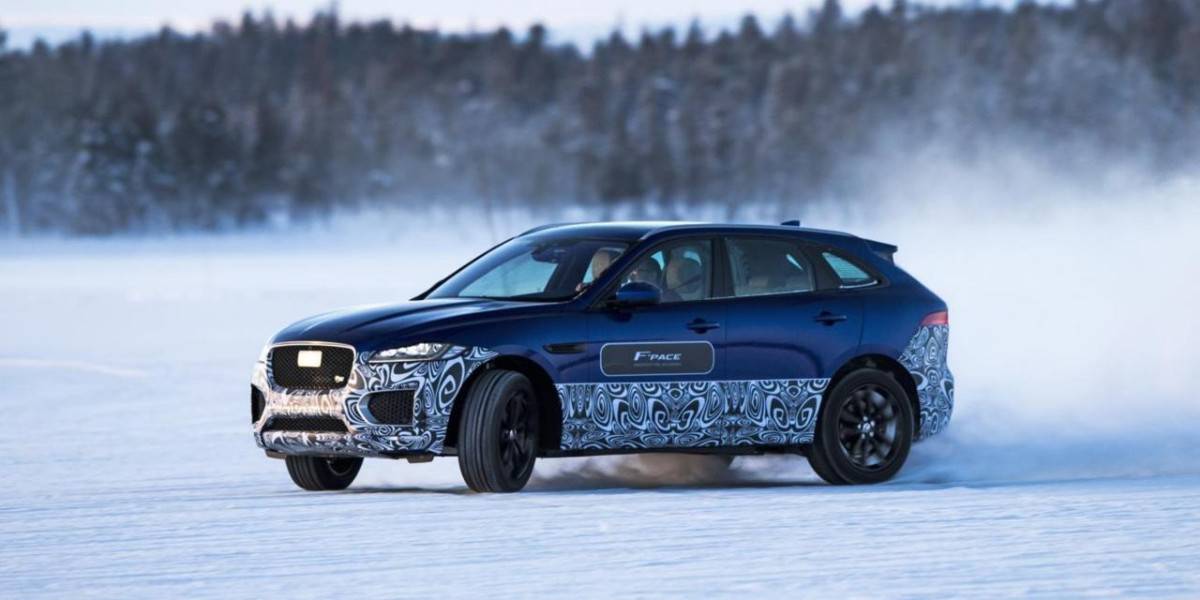
The company offers Experience Ice Academy Sweden which is situated on the Arctic Circle. In this sub-zero wilderness, Jaguar vehicles are provided for a unique test drive. Ice driving occurs on the many frozen lakes for a nominal fee.
All courses are offered with a trained instructor on board. It’s the ideal way to try out the vehicles in a harsh, unrelenting setting. Through these courses, driving skills are taken to a new level.
There are two options: the Ice Drive or Ice Drive Advanced. With the Ice Drive, participants get either a three- or four-day experience to test the limits on the ice tracks. With the Ice Drive Advanced, drivers take a three- or four-day experience that takes it up a notch. Considered the best course for someone who’s already down the Ice Drive, this package offers more track time, additional technical challenges plus the one-on-one instruction driver’s desire.
Giving Back
Jaguar is committed to helping on a global and community level. That’s why they participate in numerous humanitarian causes. Their diverse scope of help includes education, health, technology, design, and environmental causes. By 2020, they plan to impact people’s lives by investing more than 12 million dollars into their well-being.
One of the main companies they support is the Children’s Health Fund. They are a non-profit that provides health care to children through mobile medical clinics that occur in the United States. This company was founded by famous musician Paul Simon together with Irwin Redlener, M.D., a pediatric advocate.
Another organization they support is P.S. Arts. They are based in California and provide yearlong arts education for children. This comes in the form of dance, theater, music, and visual arts.
Snapshot of the Company
Jaguar is part of the luxury Jaguar Land Rover brand name. They are owned by Tata Motors from India, but their headquarters are located in Coventry, UK. The CEO of Jaguar Land Rover is Prof. Dr. Ralf Speth, while Joe Eberhardt remains the CEO of Jaguar Land Rover North America.
The company operates several plants worldwide. Their first location was in Blackpool when the company was created in 1922. That quickly became too small for them, so by 1951, they moved to Browns Lane. This located used to be the site of a shadow factory for the Daimler Company. They operated here through 2005.
The Radford plant also used to be a Daimler location but became the home for Jaguar’s engines and axles. This too was closed in 1997 when Ford took over the company.
Currently, they use three research and development facilities inside the UK. They are based in Gaydon, Warwickshire, Whitley, Coventry, and Warwick, Coventry.
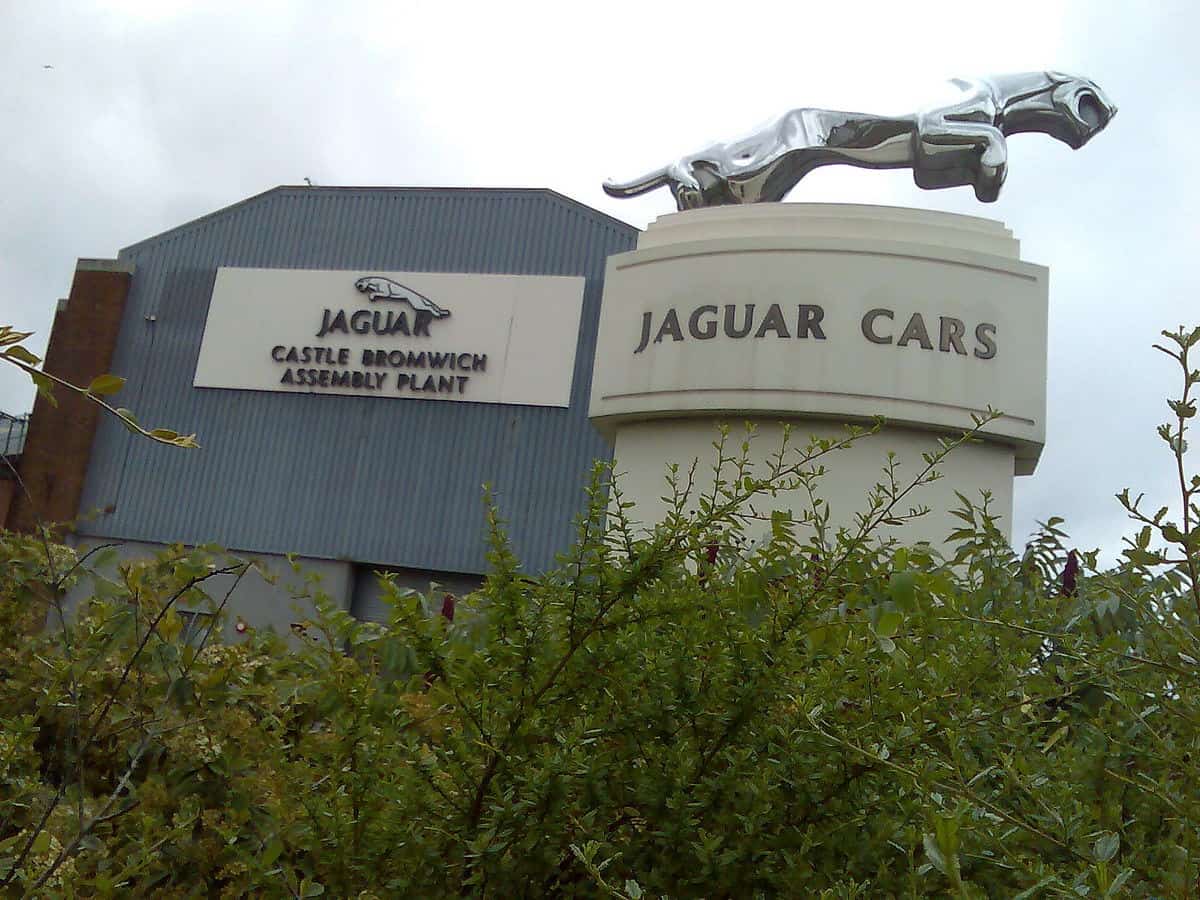
There are also many vehicles assembly plants located around the world. The Castle Bromwich Assembly, located in Birmingham, is their central facility. This is where the F-Type, XF, and XJ are produced. At the Halewood Body & Assembly, established in Halewood, Merseyside, several Jaguar and Land Rover vehicles are created here, most of which are the Land Rover Discovery Sport and the Range Rover Evoque.
At the company’s Solihull plant in the West Midlands, the F-Pace is produced along with many Land Rover vehicles. In Pune, India, the XF, XJ, and Range Rover Evoque knock-down kits are manufactured here. There’s also the Chery Jaguar Land Rover manufacturing plant, in Changsu, China. They produce the XF, XE, Land Rover Discovery Sport, and Range Rover Evoque. Finally, the JLR Brazil location produces the Range Rover Evoque as well.
Annual Sales
To date, the most profitable year for Jaguar Land Rover has been 2017. In total, they sold 604,009 vehicles during that year and over 173,000 of them were Jaguar models. This was a 20% increase from the previous year. Plus, Jaguar Land Rover sales nearly tripled since 2009.
Business Operations
The owner of Jaguar Land Rover is Tata Motors. They are based in Mumbai, India and have over 81,000 employees. They currently operate facilities in India, South Korea, Great Britain, Thailand, South Africa, and Spain. Other subsidiaries of the company include:
- Tata Motors Cars – create passenger cars in India.
- Tata Daewoo – a commercial manufacturer in South Korea.
- TML Drivelines – manufacturer axles and gearboxes for medium to heavy-duty commercial vehicles.
- Tata Hispano – coach and bus manufacturer in Spain
- Tata Technologies – provides engineering, design and business outsourcing service to other automakers. Clients include Honda, Toyota, Ford, and General Motors.
- European Technical Centre – research, design, and engineering facility on the campus of the University of Warwick.
They also participate in several joint ventures. Tata Marcopolo is a bus manufacturing venture with Tata Motors (51%) and Marcopolo S.A. (49%), based out of Brazil. Fiat-Tata is based in India and enables Fiat plus Tata Motors to produce passenger cars together. The Tata Hitachi Construction Machinery is a joint venture with Hitachi to create construction equipment and excavators.
Jaguar Logo
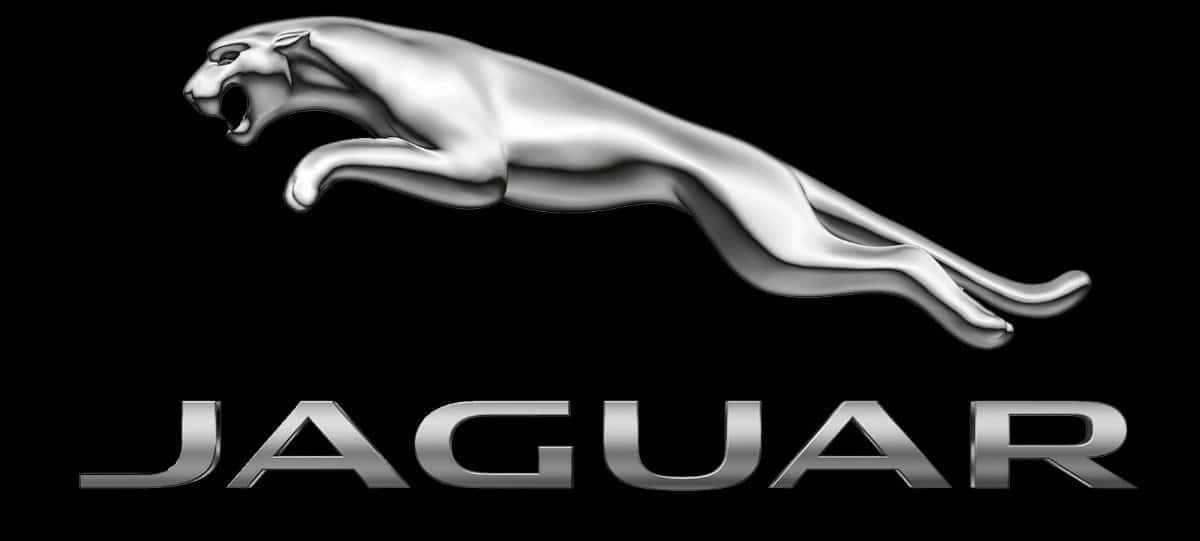
The first version of the Jaguar logo was unveiled in 1935 but wasn’t widely used until 1945. The leaping jaguar design featured the white spotted feline. This symbol meant power, strength, and speed.
Their latest update came in 2012. Now the logo comes in black, grey, and silver. When it’s used as a tridimensional figure, the company used gradient colors to highlight shades on the animal that give a more life-like appearance.
The black color of the logo stands for high-performance, integrity, and elegance while the grey and silver indicate perfection, modernity, and sophistication.
The company’ emblem seen on radiator grills and sometimes wheels, has a red font to indicate passion and performance.
Marketing
Jaguar targets their customer base from an upper-class income group. Targeted customers include businessmen, professionals, and executives. They’ve recently begun looking at younger buyers with a passion for driving. That’s why their focus is on the thrill and experience of driving.
While their tagline begins, “The art of performance,” they heavily lean on their passion for design, advanced engineering, and performance.
Most customers of the brand are from an upper-middle-class or upper-class group that want to live a better life or have a passion for flaunting their status. They typically fall in the 30-50 year age group and are in the middle of their careers. In addition, Jaguar targets fleet services and international business customers as well.
One of the most memorable ads from the company occurred in 2014 at the Super Bowl. It featured a 60-second spot that was titled, “Rendez-Vous.” British villains were played by Ben Kingsley, Mark Strong, and Tom Hiddleston. They met in London with the help of an F-Type Coupe and helicopter to hold an evil meeting. The goal of this meeting is to take over the luxury sports car market from Mercedes, BMW, and Audi. This original spot was a huge hit and talked about as one of the best Super Bowl ads of the year.
Jaguar Motorsports
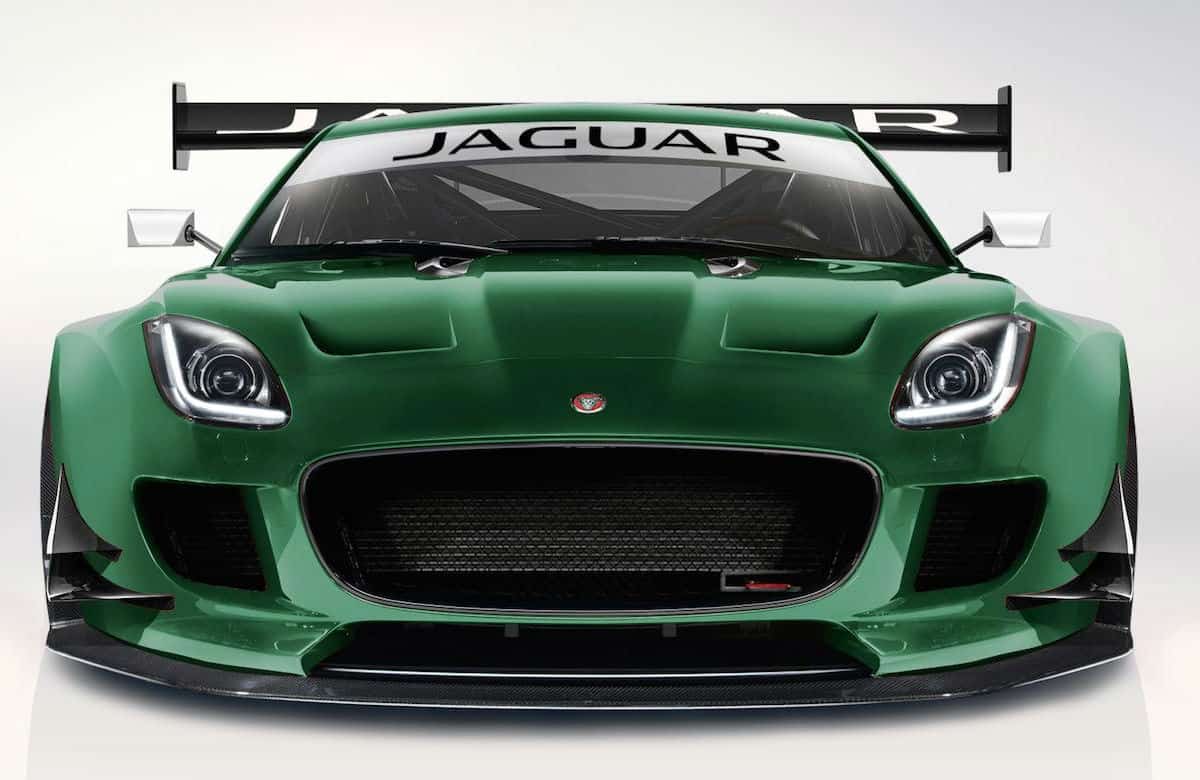
Surprisingly, the luxury brand boasts of significant successes in sports car racing. Their main victories come from the 1951 and 1953 Le Mans 24 Hours. They raced a C-Type at the time. Then, during 1955 through 1957 races, they used a D-Type.
Lofty England was the manager of the team during that time but later went on to become the CEO during the 1970s.
Then, during the 1982 season, Tom Walkinshaw’s TMR motorsports team began racing the XJ-S during the European Touring Car Championship. By 1984, they won the race. Just a year later, they also ran the TWR XJ-S to take victory in the Bathurst 1000.
During the 1980s, TWR also began preparing and designing Group C cars to use in the World Sports Prototype Championship races. From 1987, they became regular winners and even took the Le Mans title during the 1988 and 1990 races. The XJR sports cars were used for both of those races. The final XJR to win a race was the XJR-14 during the World Sportscar Championship of 1991.
Ford decided in 1999 that Jaguar needed to participate in Formula One racing. They purchased the Stewart Grand Prix team and changed it to Jaguar Racing. The F1 program was never successful and they only achieved two podium places during five seasons of racing. By 2004, Ford realized that the costs were adding up and there was no benefit to racing, so the F1 team was purchased by Red Bull to become part of Red Bull Racing.
In addition to their motorsports success, Jaguar Vector Racing beat the world speed record with a battery-operated electric boat in 2018. The Vector V20E raced with an average speed of 88.61 mph while racing on Coniston Water in England.
Jaguar Museum
The largest collection of Jaguar vehicles exist at the Coventry Transport Museum in the UK. Most of what’s displayed comes from the Jaguar Daimler Heritage Trust. The purpose was to preserve the heritage of Jaguar along with the marque names of the Lanchester, Daimler, SS, and Swallow. The trust works to protect and collect artifacts from the company as well as vehicles from the past and today. They hope to tell a story of the history and industrial development as well as the social impact the company has left on society.
Currently, there are more than 140 classic vehicles on display at the Coventry Transport Museum. Not all of them are Jaguar brand vehicles. Some of their most important cars of the past include the Daimler Wagonette, Armored Car, and Queen Mary’s Daimler.
In addition to this location, other vehicles from the Jaguar Daimler Heritage Trust are found at the Heritage Motor Center in Gaydon. They also host numerous motoring events throughout the year to exhibit special vehicles.
Jaguar Financial Group
The Jaguar Financial Group is operated by Chase and based out of Phoenix, Arizona. They offer the typical financing options for consumers that find a Jaguar for sale or Jaguar for lease. They have flexible terms and also provide a variety of options at the end of a Jaguar on lease agreement. There are even some options for those that find a pre-owned Jaguar on sale.
In addition, new vehicles have the option to include Jaguar EliteCare. This is a best-in-class maintenance and roadside assistance plan. It consists of a 5-year/60,000 mile limited warranty, roadside assistance, scheduled maintenance and the Jaguar InControl system.
The complimentary scheduled maintenance allows vehicles to remain in their best condition. All service is provided at an authorized Jaguar Retailer. The complimentary 24/7 Roadside Assistance works anywhere in the United States as long as the vehicle is still under warranty.
The Jaguar InControl system keeps you connected, unlike most other plans. It’s a full system of innovative features ranging from infotainment and other connectivity options that include remote start.
As far as the electric I-Pace vehicles, there’s also a battery warranty that’s unlike most other automakers. Coverage lasts for up to 8 years or 100,000 miles, whichever comes first. If at any point during the warranty period the battery drops below 70 percent of its health, they are replaced.
They also offer a Parts and Accessories Limited Warranty plus a Paint and Corrosion Warranty that are all separate from the EliteCare plan. In the event that you sell your vehicle prior to the end of your warranty coverage, the remaining period is fully transferrable through the end of the coverage period.
Jaguar Dealerships
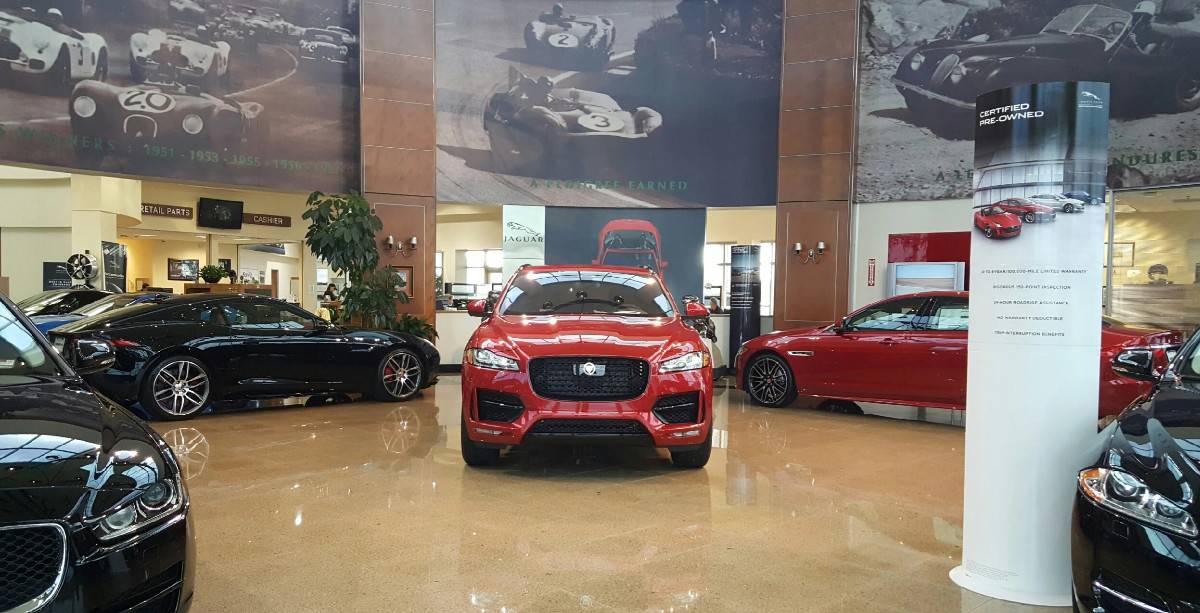
There are Jaguar dealerships located throughout the United States. When looking for one, it’s important to pay attention to any credentials or awards that set them apart. One of the most prestigious honors is the Pride of Jaguar Award. This high honor given to a Jaguar dealer shows that they take customer service seriously.
Only sixteen retailers receive the award based on the factors in three categories: business excellence, sales, and customer advocacy. There’s also one retailer given the Marque of Distinction title for becoming the top dealer of them all.
Any recipient of the Pride of Jaguar award will have the following qualities: exceed customer expectations, achieve business excellence, and have top sales performance. It’s a standard of greatness that’s tough to reach.
In addition, it’s always wise to check the J.D. Power’s Dealers of Excellence list to see if any are located near you. Currently, there is only one Jaguar dealer in the rankings. Jaguar Land Rover Marin, situated in Corte Madera, California comes highly rated. Aside from that, there are several Land Rover dealers on the list, but it doesn’t appear that they also sell Jaguar branded vehicles at their location.
6 Interesting Facts about Jaguar
1 – There are several ways to pronounce the word Jaguar. Some people say Jag-wawr while others say Jag-wire. Neither of these is actually acceptable. The proper way to say it in America is Jag-wahr while in Britain, they pronounce it Jag-you-are.
2 – Jaguar wants to make sure their cars start in Siberia. That’s why they’re tested at negative 40-degrees Fahrenheit for at least 12 hours. Then, they move it into a wind tunnel where it battles gusts up to 90 mph that measure only 0 degrees without factoring in the wind chill. If that’s not enough, they also have hoses spraying water during the whole process.
3 – The chassis testing is just as extensive. Harshness and vibration are tested at speeds of up to 766 mph. It’s reassuring to know if you were ever to literally fly down the road, you won’t hear too many rattles.
4 – When Jaguar loads their cars onto trains for transport, the drivers have strict guidelines about what they can and cannot do. They don’t wear any belts, buckles or metal shoelace eyelets so they don’t scratch anything. In fact, they may not touch the outside of the car. Instead, they simply zip or unzip the high-grade car cover.
5 – Before painting, all the vehicles are covered with ionized emu feathers. This prevents dust from accumulating on the bare metal.
6 – Steve McQueen loved to drive the Jaguar XKSS. There were only 16 of these built and it now resides in Jay Leno’s collection.
Frequently Asked Questions
Who Owns Jaguar? Is Jaguar Owned by Ford?Tata Motors is the current owner of Jaguar and Land Rover. They bought the brands from Ford for $2.8 billion in 2008. Ford was unable to earn a profit from the company while under their ownership, but Tata Motors has achieved great success.
Where are Jaguars Made? Who makes Jaguar cars? They share several production plants with Land Rover. Most of them are located in the United Kingdom, but they use other country locations as well. There’s currently a total of three plants in the UK plus one in China, India, and Brazil.
Are Jaguars Good Cars? It depends who you ask. Consumer Reports ranks them high for customer service but low for reliability. J.D. Power suggests that their dependability is better than most, but some studies put their maintenance costs at higher prices than normal. With that said, they tend to rank lower on most surveys than other luxury brands.
Does Jaguar Make an SUV? Yes, their luxury SUVs are popular among consumers. The E-Pace is a compact SUV that’s stylish and dynamic. The F-Pace is the most purchased among the SUV models and has won rave reviews from some automotive critics. The I-Pace is the company’s first electric SUV.
Is Jaguar a Luxury Car? Yes, Jaguar is a luxury car brand under the umbrella of Tata Motors. Their biggest rivals include Mercedes-Benz, BMW, and Audi. They are also compared to Aston Martin, Porsche, and Bentley vehicles from time to time.

